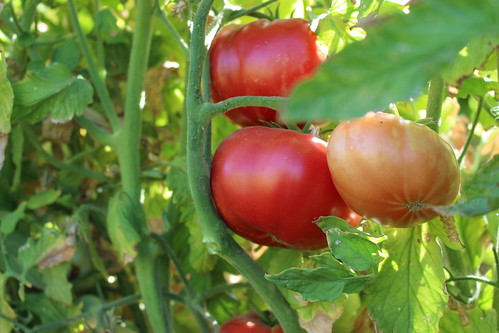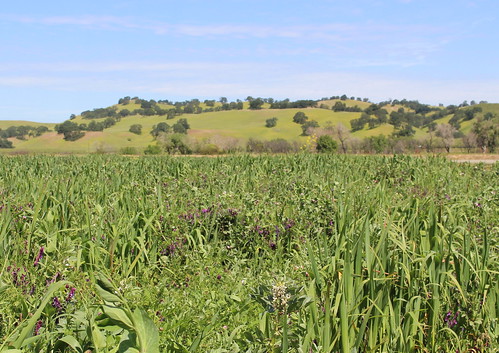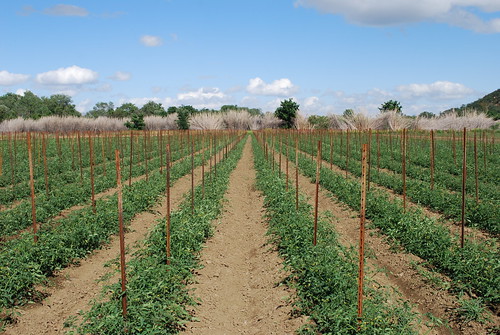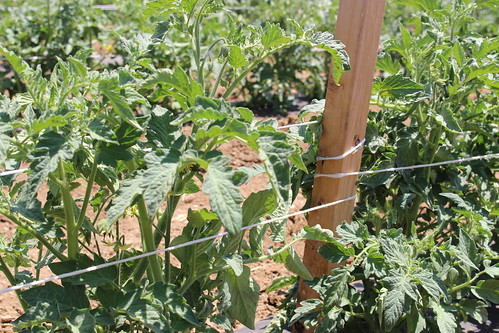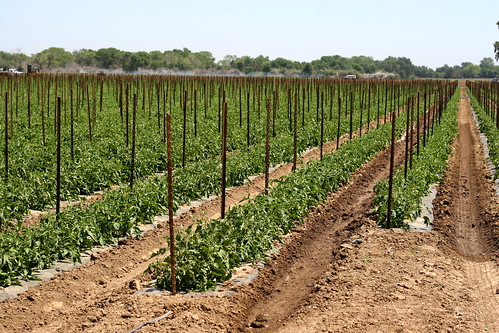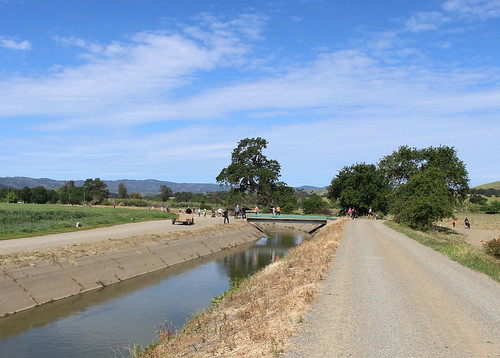From the Fields - Thaddeus
Matching when crops harvest to the seasons is something I have not yet perfected. One would think that given the number of trips the farm has made around the sun with me making the planting schedules, I would have nailed it by now. The result we want sounds simple enough: just as the harvest of the summer crops that were planted in the spring start to slow down, we want the fall vegetables planted in the summer to be ready to harvest.
Every year there is an annoying gap – summer tomatoes, peppers, melons and eggplant are slowing down and the chards, kales, carrots and mixed vegetables are not big enough. Next year, I will nail it.
Lucky for all of you, our farm works with other like-minded farms in your area to fill these little gaps so you always get the best selection of local produce. Lucky for us too – you wouldn’t like me filling half your box with eggplant this week! As much as I love eggplant, I don’t know what I would do with that much of it.
There is always the length of the season that is hard to predict. Summer harvest started a couple of weeks earlier than it has in the past years, which means it ends a couple of weeks sooner. I am also realizing that I need to start direct seeding some of my vegetables into the ground earlier, a month earlier. The notes are going into my book, and they will find their way to next year’s planting schedule. Ricardo is going to be a little surprised by how early we will want the ground ready, but he will adapt.
I am excited for the fall. The evenings are cool and crisp with the end of the summer. The summer crops and local oak trees look tired and ready to retire for the season. The cool weather is just what the fall vegetables have been hoping for. The close of another season is just around the corner.
Showing posts with label from the fields. Show all posts
Showing posts with label from the fields. Show all posts
September 7, 2015
Perfect Planting Schedule
Labels:
from the fields
August 31, 2015
Fall Transplants
From the Fields - Thaddeus
The days have been very warm, which have been allowing the last of our green tomatoes to make the push to being vine-ripened. The summer warmth hangs on into the evening until the breeze comes in and temperatures cool off. The last few mornings have left a thick layer of dew on my windshield – enough that turning the wipers on leaves rainbow stripes of mud – not very effective.
The greenhouses are delivering transplants as fast as we can tuck them into the ground. Kales, chards and little cauliflower plants arrive in bins that are lined with a racking system that is able to hold transplant trays over each other. The crew pulls one tray at time out and stacks them onto the mechanical transplanter that is coupled to the back of a tractor. Folks sit on the transplanter, and pluck plants out the their trays and place them into a rubber “hand” on the transplanting machine that tucks the plants into the ground at a uniform spacing and in a straight line.
In neighboring fields, the carrot and beet seeds have turned into little plants that have popped out of the ground. These tender, little leaves are ripe for eating by little worms. As I walk through the field,
I stop to get onto my knees to more closely inspect the baby plants. I see worm droppings and holes in the leaves. It doesn’t take long to find the tiny guys hiding on the shady side of the leaf. As I look more closely, I see another green little guy creeping across the dirt. They are small, green and very soft – I squash a few between my fingers.
Tomorrow, the guys will apply an organic worm killer BT. It only kills worms, not harming the other little critters that call the field their home. The application needs be followed by a period of time without water to ensure the mild product doesn’t get washed off the plants before the worms take a few more bites of it.
The days have been very warm, which have been allowing the last of our green tomatoes to make the push to being vine-ripened. The summer warmth hangs on into the evening until the breeze comes in and temperatures cool off. The last few mornings have left a thick layer of dew on my windshield – enough that turning the wipers on leaves rainbow stripes of mud – not very effective.
The greenhouses are delivering transplants as fast as we can tuck them into the ground. Kales, chards and little cauliflower plants arrive in bins that are lined with a racking system that is able to hold transplant trays over each other. The crew pulls one tray at time out and stacks them onto the mechanical transplanter that is coupled to the back of a tractor. Folks sit on the transplanter, and pluck plants out the their trays and place them into a rubber “hand” on the transplanting machine that tucks the plants into the ground at a uniform spacing and in a straight line.
In neighboring fields, the carrot and beet seeds have turned into little plants that have popped out of the ground. These tender, little leaves are ripe for eating by little worms. As I walk through the field,
I stop to get onto my knees to more closely inspect the baby plants. I see worm droppings and holes in the leaves. It doesn’t take long to find the tiny guys hiding on the shady side of the leaf. As I look more closely, I see another green little guy creeping across the dirt. They are small, green and very soft – I squash a few between my fingers.
Tomorrow, the guys will apply an organic worm killer BT. It only kills worms, not harming the other little critters that call the field their home. The application needs be followed by a period of time without water to ensure the mild product doesn’t get washed off the plants before the worms take a few more bites of it.
Labels:
from the fields
June 8, 2015
The Best Smell
From the Fields - Thaddeus
There are a handful of smells that hold a special place in my heart. Among them is the rich, musty fragrance emitted by dry soil getting its first drops of water. Another signature scent is the sweet aroma of carrots the hangs over a carrot field as it is being harvested and yet another favorite farm smell is the tomato smell transferred from a sticky tomato plant to your hands (which doesn’t wash off).
But the smell that holds the most special place in my heart, perhaps because it was first pointed out to me by my dear mother, is the perfume of the citrus blossom. It is intoxicating. The blossoms are long gone now. They have turned into little green marbles of fruit. In the spring, I watch the citrus trees like a hawk, waiting for the delicate clusters of white flowers to emerge from the tree so that I can bury my nose into them, breathing in the sweet smell, experiencing the beauty of our existence in nature.
In the cycle of a citrus tree’s life, the step that comes before that smell, in the heart of spring, is the planting of new citrus trees. This obviously only happens once in the course of the many years in a citrus tree’s life, but it is like our own day of birth. It must come before all the other things can happen.
We have added another satsuma mandarin orchard to our farm because each year we have seen the demand for these early mandarins grow so much that we are unable to get even our Farm Fresh To You customers enough of the fruit in the month of October.
As farmers, we face the issue that planting and caring for these orchards until they begin to yield fruit (5 years) is costly and often requires borrowing money. As such, several years ago our farm started a Green Loan Program, an innovative program that connects farmer and consumer by allowing our customers to participate in a mutually-beneficial investment partnership.
In simplified terms, qualified individuals can loan our farm money through our Green Loan Program. We then use the capital to bring new farm projects, like a new satsuma orchard, to reality. Investors can choose if they would like to receive a variable annual interest rate in cash or in Farm Fresh To You credits. Licensed through the California Department of Corporations as a DPO (direct private offering), our Green Loan Program is a legitimate way to invest in your food system. Through the DPO, we accept loans ranging from $2,000 to $50,000.
If you would like more information, please email my team at greenloan@farmfreshtoyou.com. We will get you information and coordinate a series of informational sessions about the program that I will host. This is a legitimate and secure way to let your money grow while enabling our genuine and sustainable farm to grow - let’s grow together!
There are a handful of smells that hold a special place in my heart. Among them is the rich, musty fragrance emitted by dry soil getting its first drops of water. Another signature scent is the sweet aroma of carrots the hangs over a carrot field as it is being harvested and yet another favorite farm smell is the tomato smell transferred from a sticky tomato plant to your hands (which doesn’t wash off).
But the smell that holds the most special place in my heart, perhaps because it was first pointed out to me by my dear mother, is the perfume of the citrus blossom. It is intoxicating. The blossoms are long gone now. They have turned into little green marbles of fruit. In the spring, I watch the citrus trees like a hawk, waiting for the delicate clusters of white flowers to emerge from the tree so that I can bury my nose into them, breathing in the sweet smell, experiencing the beauty of our existence in nature.
In the cycle of a citrus tree’s life, the step that comes before that smell, in the heart of spring, is the planting of new citrus trees. This obviously only happens once in the course of the many years in a citrus tree’s life, but it is like our own day of birth. It must come before all the other things can happen.
We have added another satsuma mandarin orchard to our farm because each year we have seen the demand for these early mandarins grow so much that we are unable to get even our Farm Fresh To You customers enough of the fruit in the month of October.
As farmers, we face the issue that planting and caring for these orchards until they begin to yield fruit (5 years) is costly and often requires borrowing money. As such, several years ago our farm started a Green Loan Program, an innovative program that connects farmer and consumer by allowing our customers to participate in a mutually-beneficial investment partnership.
In simplified terms, qualified individuals can loan our farm money through our Green Loan Program. We then use the capital to bring new farm projects, like a new satsuma orchard, to reality. Investors can choose if they would like to receive a variable annual interest rate in cash or in Farm Fresh To You credits. Licensed through the California Department of Corporations as a DPO (direct private offering), our Green Loan Program is a legitimate way to invest in your food system. Through the DPO, we accept loans ranging from $2,000 to $50,000.
If you would like more information, please email my team at greenloan@farmfreshtoyou.com. We will get you information and coordinate a series of informational sessions about the program that I will host. This is a legitimate and secure way to let your money grow while enabling our genuine and sustainable farm to grow - let’s grow together!
Labels:
from the fields
,
north
May 11, 2015
Tomato Musk
From the Fields - Thaddeus
Tomatoes are a force of nature that require focus every month of the year. When the harvest is done before the rains arrive, we need to know which fields will house next year’s crop so that we can adequately prepare the land for a planting of cover crop that is early enough to be tilled into the ground in time for the spring planting.
As the cover crop grows and the hills turn green with the winter, small tomato seeds are sown into the protection of the greenhouse just after the New Year. Tomatoes, originally of tropic origin, can’t handle one degree below freezing, so we wait until we are confident the last frost has come and gone before we pull the little plants out of the greenhouse and tuck them into the soil where they will battle the elements with little control from their farmer.
On our farm, this generally happens on March 15. As long as I have been around, I have never seen a frost after March 15 – the significance of this date to me is up there with my birth date!
Tomatoes grow slowly in the spring while the hills are still lush with green grass. The tomato plants drill their roots deeper and deeper into the soil. Then summer slowly arrives, a day or two at a time of warm weather. The hills begin to lose their lush, green look. The oak trees darken up a shade, and the tomatoes grow like weeds.
Spring settles back in, temperatures cool and maybe a drizzle of rain revives the grasses on the hills, gasping for their lives. This dance happens and then a week of “summer” weather arrives as it did last week on our farm. The tomatoes shoot up, and this year, we are thankful to have the stakes in on time. The crew escorts the tomatoes vines against gravity and toward the sun on the support of the temporary metal stakes and string system we have perfected.
The focus on growing the tomatoes is huge. I walk through the fields letting my hands brush along the sticky tomato plants, their tiny fuzz easily visible in the sun. Kneeling down in the soil, I admire the little, yellow flowers that are the beginning of the fruit, which will grow to mark the finale of summer in Capay. My hands are covered in tomato musk, a greenish / yellow layer that finds its way into the crevices of my fingerprints and nails. The smell is unmistakable – tomato.
Putting my hands to the my nose, I breathe in the fragrant smell and stop for the first time to look around and enjoy the army of stakes neatly put into the ground and the rows of tomatoes standing in formation like soldiers in a drill formation. It is only then that I notice the hills are no longer green; they are completely golden. The warm weather that pushed the tomatoes so fast painted the backdrop of the hills the golden summer color that will hang with us through the season.
Tomatoes are a force of nature that require focus every month of the year. When the harvest is done before the rains arrive, we need to know which fields will house next year’s crop so that we can adequately prepare the land for a planting of cover crop that is early enough to be tilled into the ground in time for the spring planting.
As the cover crop grows and the hills turn green with the winter, small tomato seeds are sown into the protection of the greenhouse just after the New Year. Tomatoes, originally of tropic origin, can’t handle one degree below freezing, so we wait until we are confident the last frost has come and gone before we pull the little plants out of the greenhouse and tuck them into the soil where they will battle the elements with little control from their farmer.
On our farm, this generally happens on March 15. As long as I have been around, I have never seen a frost after March 15 – the significance of this date to me is up there with my birth date!
Tomatoes grow slowly in the spring while the hills are still lush with green grass. The tomato plants drill their roots deeper and deeper into the soil. Then summer slowly arrives, a day or two at a time of warm weather. The hills begin to lose their lush, green look. The oak trees darken up a shade, and the tomatoes grow like weeds.
Spring settles back in, temperatures cool and maybe a drizzle of rain revives the grasses on the hills, gasping for their lives. This dance happens and then a week of “summer” weather arrives as it did last week on our farm. The tomatoes shoot up, and this year, we are thankful to have the stakes in on time. The crew escorts the tomatoes vines against gravity and toward the sun on the support of the temporary metal stakes and string system we have perfected.
The focus on growing the tomatoes is huge. I walk through the fields letting my hands brush along the sticky tomato plants, their tiny fuzz easily visible in the sun. Kneeling down in the soil, I admire the little, yellow flowers that are the beginning of the fruit, which will grow to mark the finale of summer in Capay. My hands are covered in tomato musk, a greenish / yellow layer that finds its way into the crevices of my fingerprints and nails. The smell is unmistakable – tomato.
Putting my hands to the my nose, I breathe in the fragrant smell and stop for the first time to look around and enjoy the army of stakes neatly put into the ground and the rows of tomatoes standing in formation like soldiers in a drill formation. It is only then that I notice the hills are no longer green; they are completely golden. The warm weather that pushed the tomatoes so fast painted the backdrop of the hills the golden summer color that will hang with us through the season.
Labels:
from the fields
,
north
April 13, 2015
What’s Up With Farm Water?
From the Fields - Thaddeus
California is a beautiful state. In the south, its days are forever sunny, moving north we find the south end of the Central Valley that is blessed with a near year-round growing season. As we reach the beginning of Northern California, the Salinas Valley, we find temperate weather that is ideal for growing vegetables for only nine months of the year. Near Sacramento, the summer days are explosive and perfect for hot-weather, summer crops, and it doesn’t cool off enough for vegetables until fall and then it is too cold for many things through the winter. North of Sacramento exists a mighty chunk of our state, filled with mountains and natural resources, but shy of any significant population.
These places are connected by many things including a water system that captures snow melt in the north and delivers it down the Sacramento River to the delta where man-made canals pump rivers that run uphill to deliver water to farms cities. The reality of the water situation for farms is completely dependent upon wherein the state they exist. I have the pleasure to run our farm and work with our partner farms throughout the state and the topic of water always comes up.
The main source of water for farms south of Sacramento is delivered through the California Aqueduct. The supply for this source of water is the snow capture in Northern California. When that snow melts, it’s stored in reservoirs and then moved to farms. Farms that are dependent on this water are in big trouble. Our farm is not dependent upon this water. In addition to this water source, there are a series of local water projects throughout the state. Our farm in Yolo County uses rain water that is captured in Clear Lake. Last year, the canal was dry, but this year, we received enough water that our canal will be open. Our partner farm in the desert (southeast corner of California) gets their water from the Colorado River; they too have enough water.
After surface water options, we look at groundwater. In general, the more sunny days the area has, the less available groundwater there is. Farms from Salinas north, generally have a healthy availability of groundwater to draw from, however with a lack of other water sources the groundwater gets hit pretty hard. Farms in the southern part of the state generally don’t have the same groundwater options. Our farm in Fillmore has a well, but the water is very deep down and saltier that what is ideal.
The spot in the state that has been hit the hardest is the west side of the Central Valley, an area that had no agriculture until the State Water Project ran water to it and now that water is gone. They are really hurting. Groundwater in this area is hard to find, and the wells needed to get it are really deep and often the water is so salty it is of little value to crops.
Our farm and partner farms are doing okay for water, but we have all had to sit some acres out and adjust our crop selections. The nightmare for us will be if one of our groundwater wells goes dry this summer. Our focus will be using the water we have efficiently, which means matching water application rates to the rate at which crops will be using the water and focusing on really efficient application method which are drip irrigation methods, eliminating any leaks in the system and applying a thin layer of plastic mulch when possible to eliminate evaporation.
California is a beautiful state. In the south, its days are forever sunny, moving north we find the south end of the Central Valley that is blessed with a near year-round growing season. As we reach the beginning of Northern California, the Salinas Valley, we find temperate weather that is ideal for growing vegetables for only nine months of the year. Near Sacramento, the summer days are explosive and perfect for hot-weather, summer crops, and it doesn’t cool off enough for vegetables until fall and then it is too cold for many things through the winter. North of Sacramento exists a mighty chunk of our state, filled with mountains and natural resources, but shy of any significant population.
These places are connected by many things including a water system that captures snow melt in the north and delivers it down the Sacramento River to the delta where man-made canals pump rivers that run uphill to deliver water to farms cities. The reality of the water situation for farms is completely dependent upon wherein the state they exist. I have the pleasure to run our farm and work with our partner farms throughout the state and the topic of water always comes up.
The main source of water for farms south of Sacramento is delivered through the California Aqueduct. The supply for this source of water is the snow capture in Northern California. When that snow melts, it’s stored in reservoirs and then moved to farms. Farms that are dependent on this water are in big trouble. Our farm is not dependent upon this water. In addition to this water source, there are a series of local water projects throughout the state. Our farm in Yolo County uses rain water that is captured in Clear Lake. Last year, the canal was dry, but this year, we received enough water that our canal will be open. Our partner farm in the desert (southeast corner of California) gets their water from the Colorado River; they too have enough water.
After surface water options, we look at groundwater. In general, the more sunny days the area has, the less available groundwater there is. Farms from Salinas north, generally have a healthy availability of groundwater to draw from, however with a lack of other water sources the groundwater gets hit pretty hard. Farms in the southern part of the state generally don’t have the same groundwater options. Our farm in Fillmore has a well, but the water is very deep down and saltier that what is ideal.
The spot in the state that has been hit the hardest is the west side of the Central Valley, an area that had no agriculture until the State Water Project ran water to it and now that water is gone. They are really hurting. Groundwater in this area is hard to find, and the wells needed to get it are really deep and often the water is so salty it is of little value to crops.
Our farm and partner farms are doing okay for water, but we have all had to sit some acres out and adjust our crop selections. The nightmare for us will be if one of our groundwater wells goes dry this summer. Our focus will be using the water we have efficiently, which means matching water application rates to the rate at which crops will be using the water and focusing on really efficient application method which are drip irrigation methods, eliminating any leaks in the system and applying a thin layer of plastic mulch when possible to eliminate evaporation.
Labels:
from the fields
March 30, 2015
North from the House
From the Fields — Thaddeus
My house sits at a bend in the canal on our farm. The front of the house looks directly at the shop, as if, among the abundance of natural beauty surround the house, the shop is the best thing to look at. Clearly this home was built by a different kind of farmer (it was built by Johnny, our childhood neighbor in the 70’s who was less than excited about his new hippie neighbors).
The side door on this house is the one with the views. For this reason it is our side yard that received all the attention when we started the landscaping. From the side yard the view goes north, over the canal, across the lower fields and up the rolling hills, scattered with oaks, until the horizon meets the sky.
This spot on the farm is interesting because it is centrally located, but the canal doesn’t have a bridge over it, making the fields on the other side extremely difficult to reach. Hours and hours, miles over miles, have been spent by tractors and farm vehicles driving up the canal to the nearest bridge, then back down it.
North from my side yard, just across the canal, is a huge oak tree. This time of the year the oak leaves have grown to their full size but they are light green in color, awaiting the summer heat to darken them up. At the top of this oak tree, in the crux of some branches, a pair of red tailed hawks have put their nest. This is the third season in a row the couple has chosen this spot to raise their little babies.
Below the oak tree with the hawk nest, the construction on the much needed bridge across the canal has just been finished. Last week after my day had ended I sat in our swinging bench with my wife, beverages in hand, while the kids watered their garden. The smell of spring rolled through the yard with the breeze. The hawks came and went from their nest in the tree and below them a tractor returning from the field was able to use the bridge to get back to the shop - saving the first ten minutes in travel time. The tractor driver and I exchanged thumbs ups over the new bridge.
Doesn't get any better than this.
The side door on this house is the one with the views. For this reason it is our side yard that received all the attention when we started the landscaping. From the side yard the view goes north, over the canal, across the lower fields and up the rolling hills, scattered with oaks, until the horizon meets the sky.
This spot on the farm is interesting because it is centrally located, but the canal doesn’t have a bridge over it, making the fields on the other side extremely difficult to reach. Hours and hours, miles over miles, have been spent by tractors and farm vehicles driving up the canal to the nearest bridge, then back down it.
North from my side yard, just across the canal, is a huge oak tree. This time of the year the oak leaves have grown to their full size but they are light green in color, awaiting the summer heat to darken them up. At the top of this oak tree, in the crux of some branches, a pair of red tailed hawks have put their nest. This is the third season in a row the couple has chosen this spot to raise their little babies.
Below the oak tree with the hawk nest, the construction on the much needed bridge across the canal has just been finished. Last week after my day had ended I sat in our swinging bench with my wife, beverages in hand, while the kids watered their garden. The smell of spring rolled through the yard with the breeze. The hawks came and went from their nest in the tree and below them a tractor returning from the field was able to use the bridge to get back to the shop - saving the first ten minutes in travel time. The tractor driver and I exchanged thumbs ups over the new bridge.
Doesn't get any better than this.
Labels:
from the fields
,
north
Subscribe to:
Posts
(
Atom
)

